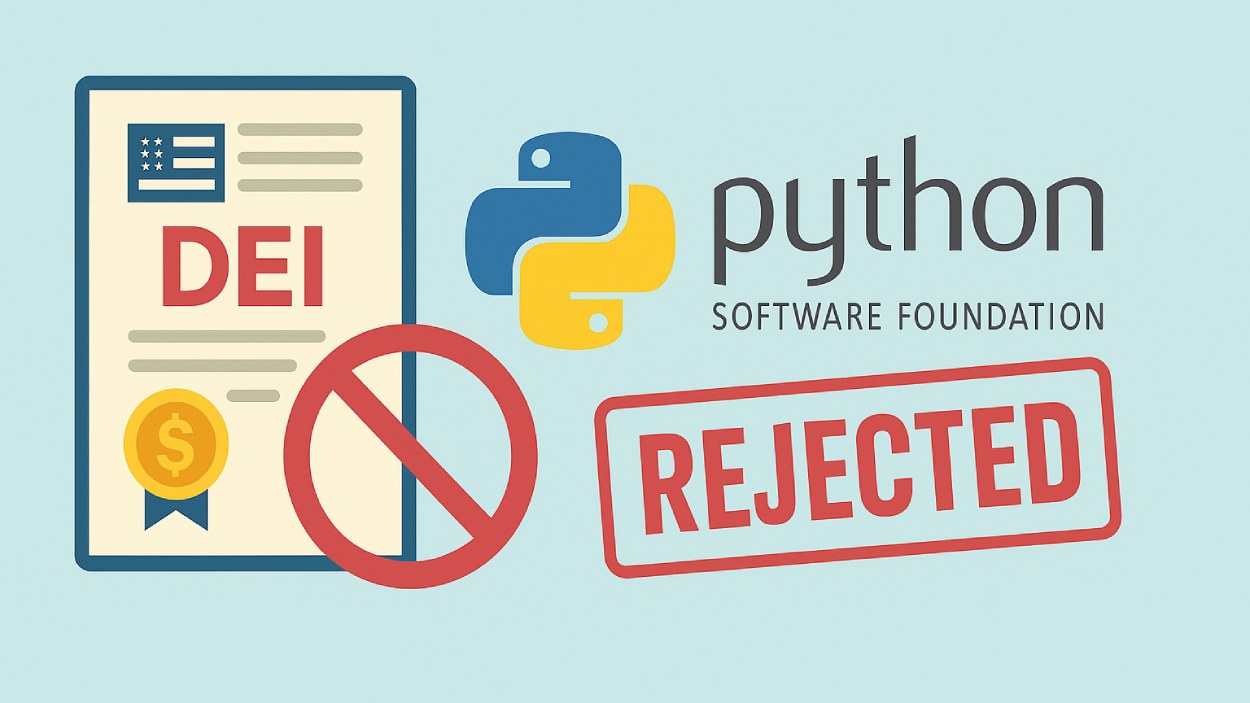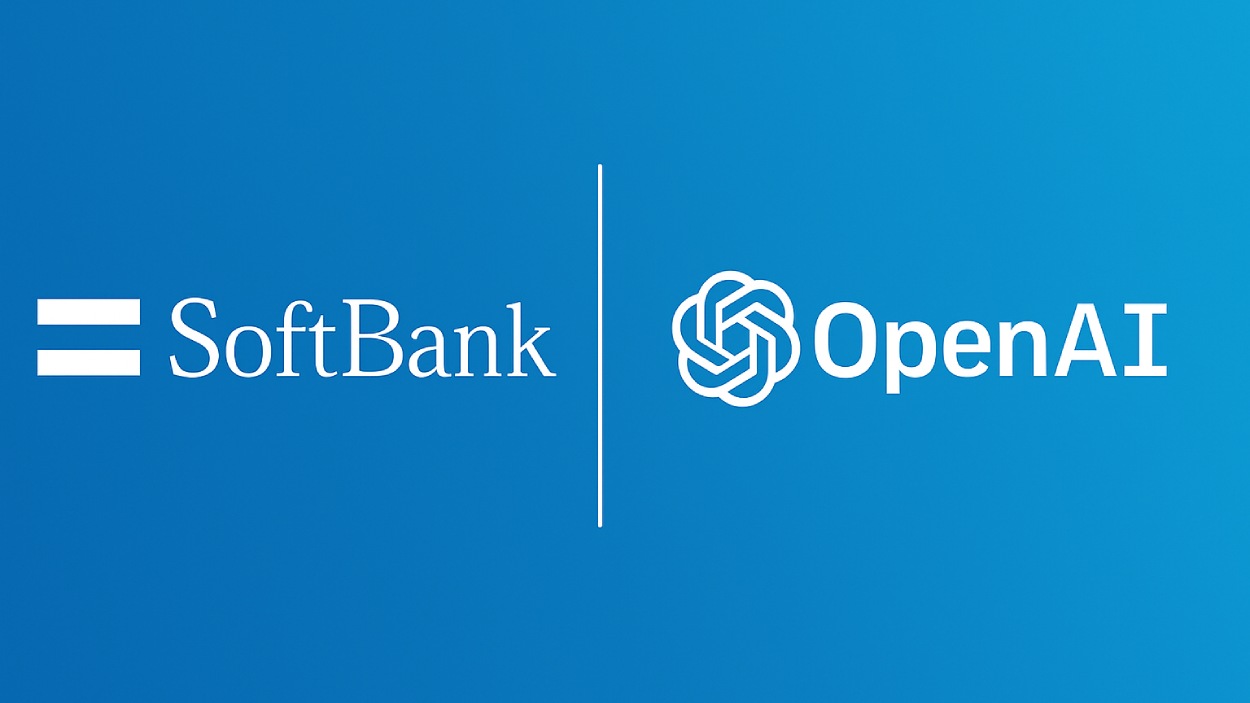PayPal continues to be a major player in digital payments, and its workforce size is one key metric that reflects how it scales and evolves. In recent years, changes in employee count, diversity, and structure offer insight into how PayPal is adapting to market pressures. In e‑commerce and fintech, for example, headcount shifts can signal investment in new tech, and in regulatory/compliance roles can reflect changing risk landscapes. Read on to explore how many people work at PayPal, and how that breaks down by gender, role, and growth over time.
How Many People Work At PayPal?
- PayPal employed 24,400 people as of December 2024.
- That represented a 10.29% decline from 2023’s headcount of 27,200.
- In its 2024 Gender & Inclusion report, PayPal reports professional roles are 42.8% female / 57.0% male.
- Among leadership, women constitute roughly 35% of roles.
- The technical workforce is about 25% women, according to PayPal’s own statements.
- In 2024, PayPal’s U.K. workforce was 46% women, growing from 43% in 2023.
- PayPal’s 2025 Impact Day mobilized more than 11,000 employees across 37 locations.
Recent Developments
- In 2024–2025, PayPal has continued restructuring to streamline operations and cut costs amid macroeconomic pressure.
- In early 2024, the company announced plans to cut 9% of its workforce, affecting around 2,500 roles.
- Earlier, in January 2023, PayPal cut about 7% of its workforce, roughly 2,000 roles.
- The 2024 Gender & Inclusion Report (GIR) introduced more granular reporting on professional vs. leadership roles.
- PayPal has publicly emphasized gender pay equity and incremental gains in women’s representation in technical roles.
- In the U.K. specifically, PayPal’s gender representation has improved, with women making up 46% of the workforce in 2024.
- Its global Impact Day 2025 drew participation from 11,000+ employees, indicating continued emphasis on employee engagement and social initiatives.
- In July 2025, PayPal announced the creation of 100 new AI/data science jobs in Dublin, signaling investment in tech and innovation hubs.
Global Workforce Distribution at PayPal
- PayPal’s workforce is regionally balanced, with about 44% based in the Americas, 44% in Asia-Pacific, and 12% in Europe and the Middle East.
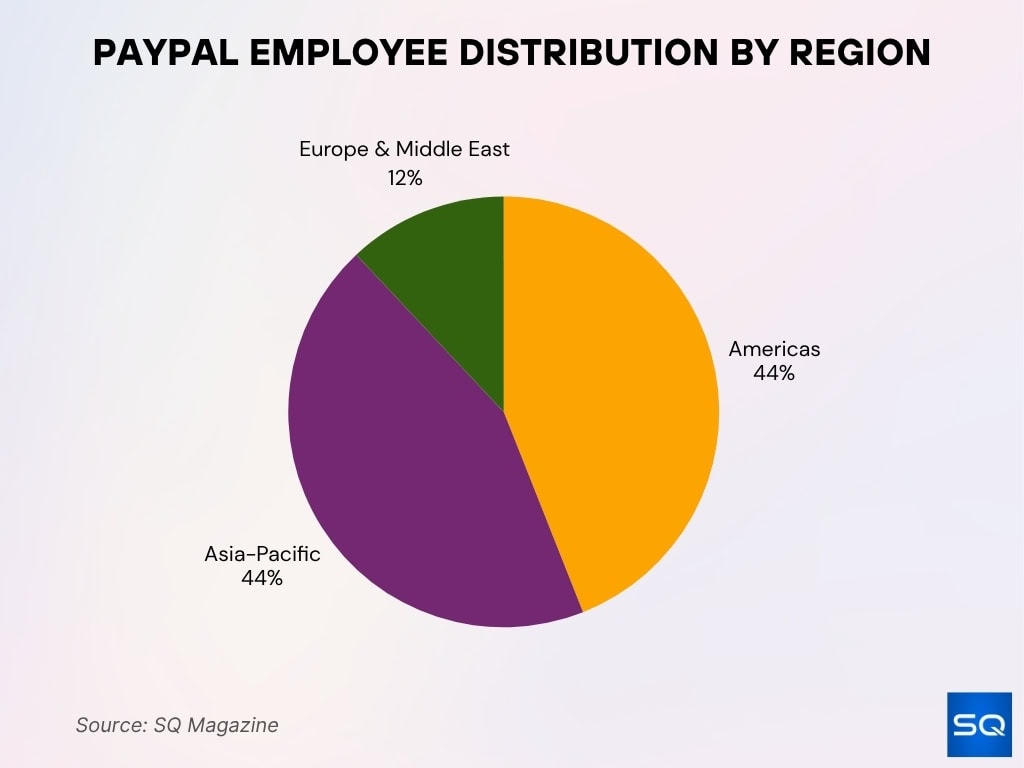
- This translates to roughly 10,736 employees each in the Americas and Asia-Pacific, and 2,928 in Europe and the Middle East, out of a total of 24,400 employees.
- The company operates across 28 countries and represents over 140 nationalities worldwide.
- PayPal’s workforce concentration in the Asia-Pacific region underscores its strategic pivot toward major technology and innovation hubs.
- The geographic distribution has remained stable year over year, signaling a balanced and sustainable global expansion.
- Regional staffing levels reflect PayPal’s strategic focus on innovation, customer support, and market growth across key territories.
PayPal’s Current Team (Key People)
- Alex Chriss serves as President and CEO of PayPal, appointed in 2023. Previously a top executive at Intuit, he brings deep experience in scaling SaaS businesses and building customer-centric platforms.
- Blake Jorgensen holds the role of Chief Financial Officer, having joined PayPal with prior CFO experience at Electronic Arts and Levi Strauss & Co.
- Archie Deskus is the Chief Technology Officer, leading the company’s global technology infrastructure, engineering, and product innovation.
- Peggy Alford serves as Executive Vice President, Global Sales, overseeing merchant and partner relationships. She has held various leadership roles at PayPal and Facebook.
- Erika H. Brown acts as Chief Human Resources Officer, responsible for global talent strategy, inclusion, and workforce planning.
- Michelle Gill, PayPal’s SVP and General Manager of Consumer, leads product strategy and user experience for PayPal’s consumer-facing services.
- Francine Katsoudas was recently appointed to the board of directors and brings significant HR and organizational development experience from her time at Cisco.
- Debbie Messemer, an experienced financial executive and former KPMG managing partner, chairs the Audit Committee of PayPal’s board.
- Jonathan Auerbach recently exited his role as Chief Strategy, Growth & Data Officer, reflecting ongoing restructuring at the executive level.
- The executive team includes diverse backgrounds across finance, technology, legal, compliance, and marketing, aiming to align leadership with PayPal’s global and digital focus.
Year‑by‑Year PayPal Employee Numbers
- 2024: 24,400 employees.
- 2023: 27,200 employees (–9.03% from 2022).
- 2022: 29,900 employees (–3.24% from 2021).
- 2021: 30,900 employees (+16.6% from 2020).
- 2020: 26,500 employees.
- 2019: 23,200 employees.
- 2018: 21,800 employees.
- The highest headcount peak in this period was in 2021 (30,900), and the lowest was in 2018 (21,800).
PayPal’s Global Scale and Financial Overview
- 434 million active users worldwide demonstrate PayPal’s vast global presence and user trust.
- Over 10.3 million live websites now integrate PayPal as a preferred payment method across e-commerce and digital services.
- PayPal commands about 45% of the global payments market, reaffirming its position as a leading fintech powerhouse.
- The platform processed an impressive $1.68 trillion in total payment volume (TPV), reflecting sustained transaction growth.
- It reported $31.8 billion in net revenue, showing strong monetization of its financial ecosystem.
- With $6.8 billion in free cash flow, PayPal continues to exhibit high operational efficiency and financial resilience.
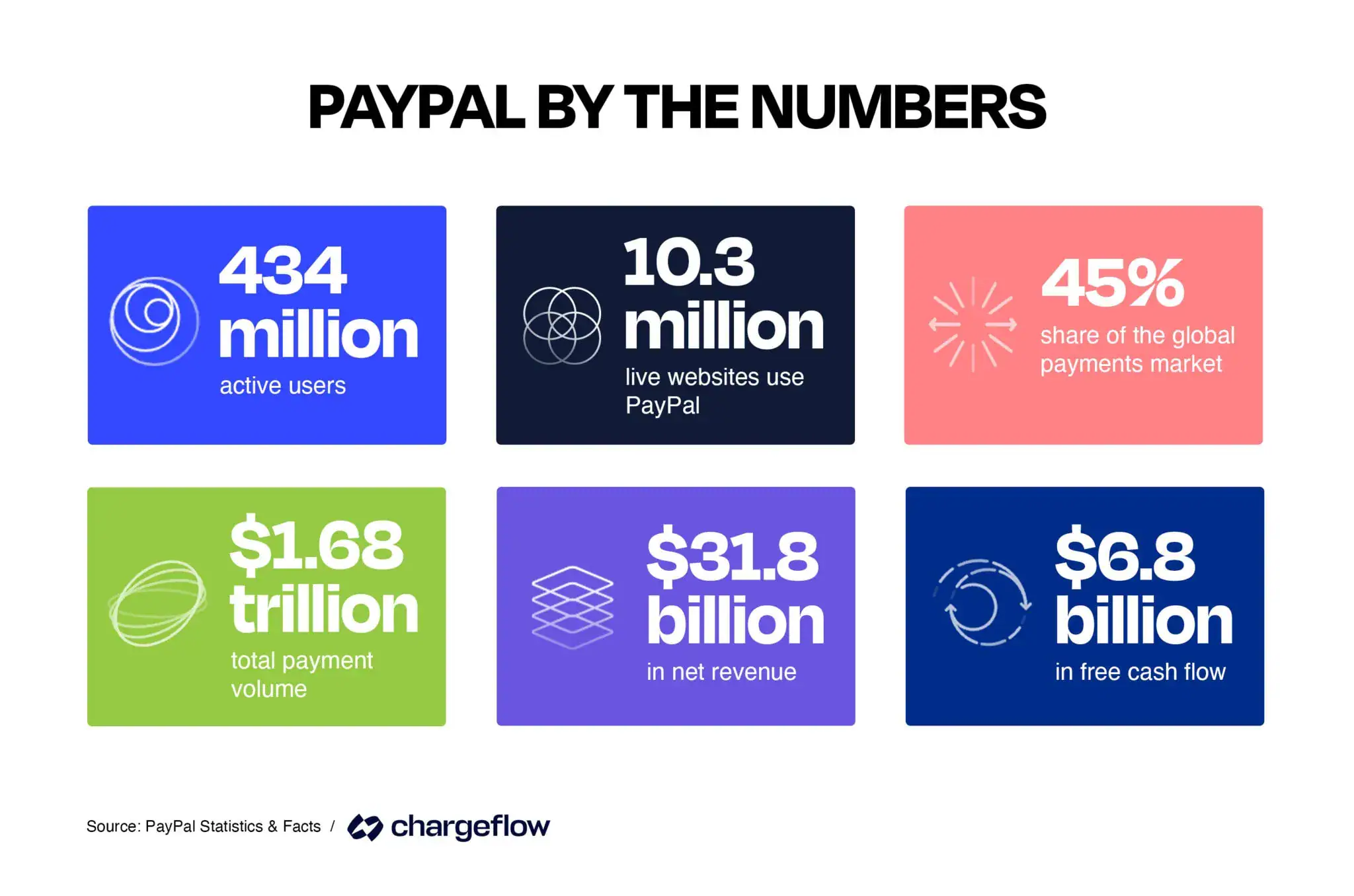
Workforce Gender Distribution at PayPal
- In 2024, PayPal reported 42.8% female / 57.0% male in professional (non‑technical) roles.
- Among leadership positions, women held approximately 35% of roles.
- PayPal states that 25% of its technical workforce is women.
- Some external data suggest the overall workforce includes 42.6% female / 57.2% male globally.
- According to other sources, among technical roles, men were 71.7% and women 28.1%.
- Within leadership, some reports show 64% men / 36% women.
- In the U.K. workforce snapshot (April 2024), women made up 46% of the total staff.
- PayPal also highlights maintaining gender pay equity globally (equal pay for substantially similar work).
PayPal Workforce Ethnicity Statistics
- In 2024, PayPal’s U.S. workforce was approximately 40.1% Asian, 5.4% Black/African American, 7.0% Hispanic/Latino, 41.7% White, with remaining shares in multiracial/other groups.
- Across the entire 2024 global workforce, ethnic diversity accounted for ~54.5% of employees.
- In technical roles in the U.S., 2024 shares were ~62.3% Asian, 2.5% Black, 4.0% Hispanic, and 25.6% White.
- Professional roles in the U.S. had ~40.7% Asian, 5.4% Black, 7.1% Hispanic, and 41.1% White in 2024.
- Among leadership roles, the U.S. ethnic mix in 2024 was ~28.4% Asian, 5.1% Black, 5.3% Hispanic, and 53.3% White.
- Going back to 2021, the overall workforce showed 33.0% Asian, 8.6% Black, 8.6% Hispanic/Latinx, 45.2% White, and 5.8% Other.
- At leadership in 2021, Asian representation was ~27%, Black ~4%, Hispanic ~4.5%.
- PayPal has publicly stated that in their U.S. technical ranks, underrepresented ethnic groups increased by 3% in 2024.
- As of 2023, PayPal had employees representing 144 nationalities across 27 countries.
Global Market Share of Digital Payment Providers
- PayPal leads the market with a 41.87% share, solidifying its position as the most widely used digital payment platform worldwide.
- Stripe holds 19.45%, ranking second, with millions of merchants and developers relying on its streamlined infrastructure.
- Shopify Pay Installments captures 12.47%, reflecting consumers’ growing preference for flexible and installment-based payments.
- Amazon Pay accounts for 4.76%, benefiting from deep integration across the Amazon ecosystem.
- Afterpay holds 2.13%, fueled by strong adoption of buy-now-pay-later (BNPL) models among online shoppers.
- Other providers collectively represent 19.32%, underscoring the fragmented nature of the remaining payment landscape.
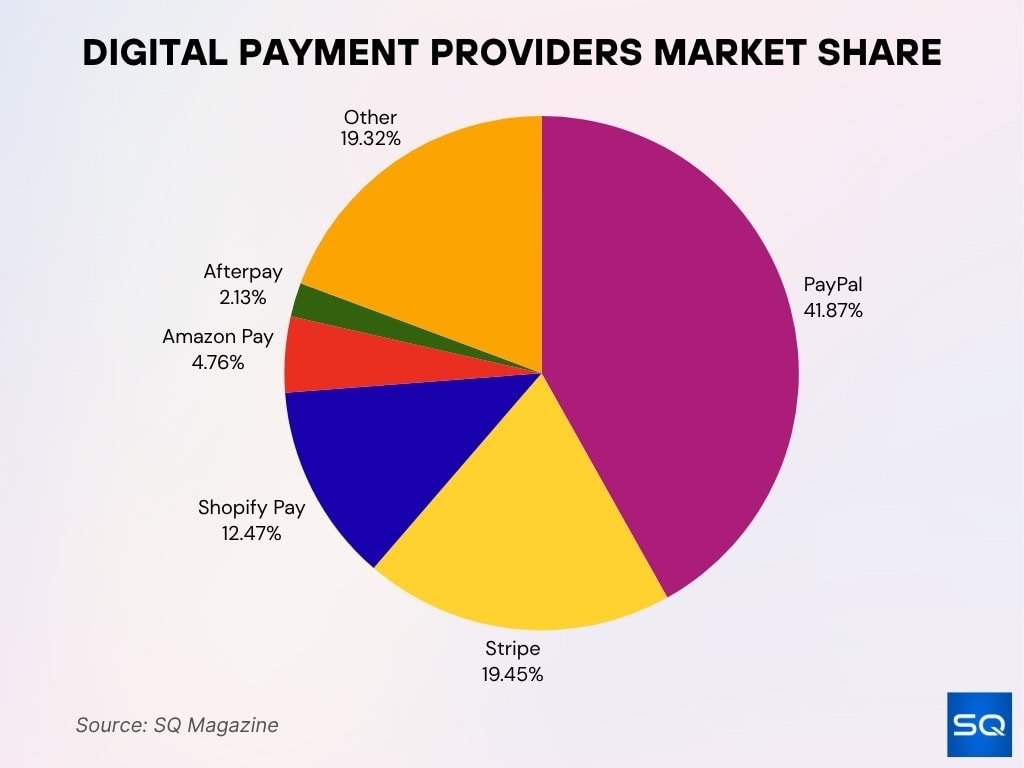
Employee Roles and Departments at PayPal
- PayPal divides roles broadly into technical (engineering, data, product), professional (finance, marketing, legal, operations), and leadership / executive roles.
- In 2024, 29.1% of technical roles were held by women.
- A 2023‑25 progress report noted that PayPal’s external hiring of women at VP+ levels increased by 150% year over year.
- PayPal promotes two times more women at leadership levels as it hires externally at those levels.
- The company maintains 8 Employee Resource Groups (ERGs), such as Aliados (Latinx), Amplify (Black employees), Thrive (disability), and Pride (LGBTQ+).
- PayPal states that its ERGs help with recruitment, retention, mentoring, and cultural belonging.
- Within its global offices, many roles are regionally allocated: e.g., engineering centers in Bengaluru, Singapore, Germany, etc.
- PayPal’s global impact/community programs often engage employees across roles (e.g., corporate, technical, operations) in volunteering and grant‑matching.
- PayPal reports that ~78% of employees agree the company’s leadership principles are integrated into daily work.
Revenue and Profit Per Employee
- In 2024, PayPal’s revenue per employee was approximately $1.32 million.
- In the same period, profit per employee was about $192,000.
- Revenue per employee rose ~19.06% in 2024 vs. 2023 (i.e., adding $208,630 per head).
- TrueUp also reports revenue per employee of $1.3 million for PayPal.
- PayPal’s transaction revenue in 2024 was $7.588 billion, which comprises ~90.7% of net revenues.
- The total payment volume (TPV) in 2024 was $1.68 trillion (up ~10% YoY).
- In 2024, PayPal processed ~26.3 billion transactions (~5% increase).
- International operations composed ~43% of revenue in 2024, U.S. revenue ~57%.
- PayPal’s free cash flow in 2024 was $6.8 billion.
PayPal User Demographics and Age Breakdown
- 97% of Millennials are familiar with PayPal, and most have used the service at least once.
- 25% of users are aged 25–34, making this the platform’s largest age segment.
- 22% of users are over 55, showing PayPal’s strong appeal among older adults.
- 20% fall within the 45–54 age group, reflecting a solid mid-life user base.
- 19% are between 35–44, representing digitally experienced professionals.
- 14% of users are under 24, signaling early adoption among younger generations.
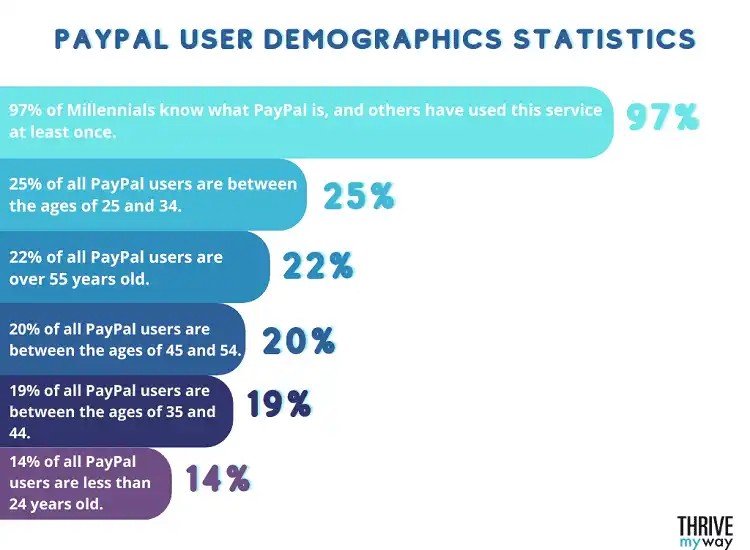
PayPal Global Office and Location Stats
- PayPal’s headquarters is in San Jose, California, anchored in the North San Jose Innovation District.
- Its European headquarters operate from Dublin, Ireland.
- Engineering and analytics hubs exist in Berlin, Germany, and other European centers.
- Asia’s presence includes offices in Bengaluru, India, and Singapore to support regional tech and operations.
- U.S. roles are also distributed: e.g., Austin, New York (West Village), Scottsdale, Chicago, Omaha, and Los Angeles.
- As of end‑2023, ~10,200 employees were based in the U.S.
- In 2023, the geographic split was ~45% Americas, 42% Asia-Pacific, 13% Europe & Middle East.
- PayPal operates in 27 countries with representation of 144 nationalities across its workforce.
- The company is building a new 80,091‑square‑foot office in Austin (Domain Tower 2), slated for completion ~late 2025.
Employee Growth Rate and Layoff Trends
- In early 2024, PayPal announced plans to cut 9% of its workforce, equivalent to about 2,500 positions.
- That 9% reduction followed a prior 7% cut (~2,000 jobs) in January 2023.
- Combined across 2023–2024, those reductions represent approximately 16% of headcount over the two years.
- PayPal forecast $90–100 million in severance costs tied to workforce reductions.
- The same plan estimates $300 million in total cost‑reduction efforts, of which labor cuts are a major component.
- PayPal’s workforce shrank from ~27,200 in 2023 to 24,400 in 2024, a decline of ~10.3%.
- Some reductions were triggered by regulatory changes in international markets, causing “workforce reduction” costs of $36 million in H1 of the year.
- The pattern suggests PayPal is deliberately “right‑sizing” its structure to improve agility and margin amid competitive pressures.
- Looking ahead, PayPal is reportedly creating 100 new AI/data science roles in Dublin, signaling selective reinvestment in strategic capabilities.
PayPal Culture, Benefits, and Work Environment
- PayPal maintains 100% global gender and U.S. ethnic pay equity, as audited in its latest assessments.
- The company offers tuition reimbursement and invests in continuous learning, with employees receiving an average of 48 training hours per year, 2.4× the industry standard.
- Most employees rate the work environment positively, with a “comfortably fast” pace of work.
- PayPal supports eight Employee Resource Groups (ERGs), such as Amplify (Black), Aliados (Latinx), Pride (LGBTQ+), etc.
- Executives have emphasized an empathetic leadership style and a listening culture.
- Many entry‑level employees live “on the financial edge,” prompting internal programs on financial wellness.
- Benefits include wellness programs, comprehensive health coverage, and financial planning support.
- The company promotes inclusive hiring practices, accommodations, and diverse perspectives as core to its culture.
- PayPal’s culture score is ~70/100, placing it 6th among its peer set.
Employee Count Compared to Competitors
- PayPal’s 2024 headcount of 24,400 is modest compared to some tech and payment firms.
- Workday has ~20,400 employees as of 2025.
- Smaller fintechs such as WePay may have only a few hundred employees.
- PayPal supports ~434 million active users, which gives it a high ratio of users to staff.
- Its revenue per employee (~$1.32 million) highlights its efficiency.
- Despite fewer employees than some tech giants, PayPal competes effectively due to its fintech focus.
- Many competitors are diversified across sectors, while PayPal remains focused on digital payments.
- New AI investments may further shift its workforce to tech‑centric roles, differentiating it from broader enterprise competitors.
Frequently Asked Questions (FAQs)
PayPal’s headcount dropped by 2,800 employees, equivalent to a 10.29% decline.
Among technical staff, about 28.1% were women and 71.7% were men.
PayPal announced a 9% workforce reduction, corresponding to about 2,500 jobs.
PayPal had 24,400 employees at year‑end 2024.
Conclusion
From a peak of employees, PayPal’s headcount has contracted by nearly 21% over four years. The company has navigated that shift with deliberate layoffs and by redirecting resources toward growth areas like AI. Its culture and benefits programs, including pay equity, ERGs, training, and wellness support, help retain talent in a volatile tech landscape. Against competitors, PayPal operates with fewer staff while maintaining high output per employee. In short, PayPal today is leaner, yet more focused, balancing cuts with strategic investments. Explore the full article to dive deeper into departmental splits, geographic footprint, and comparisons across time.











































